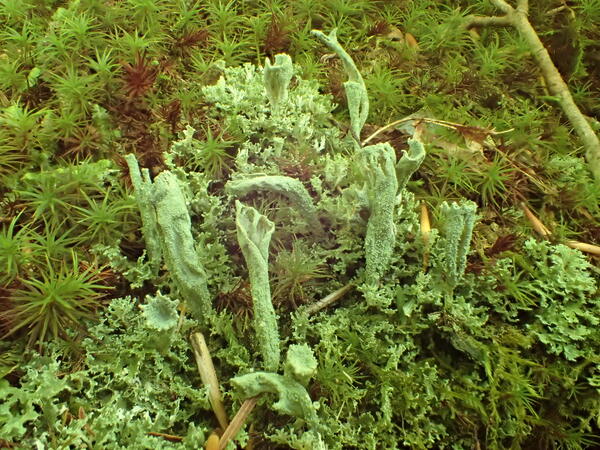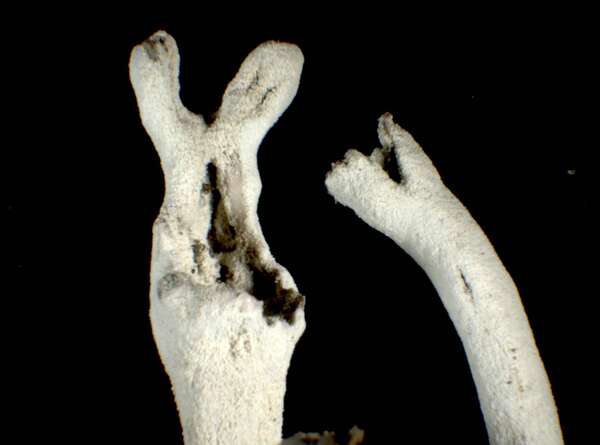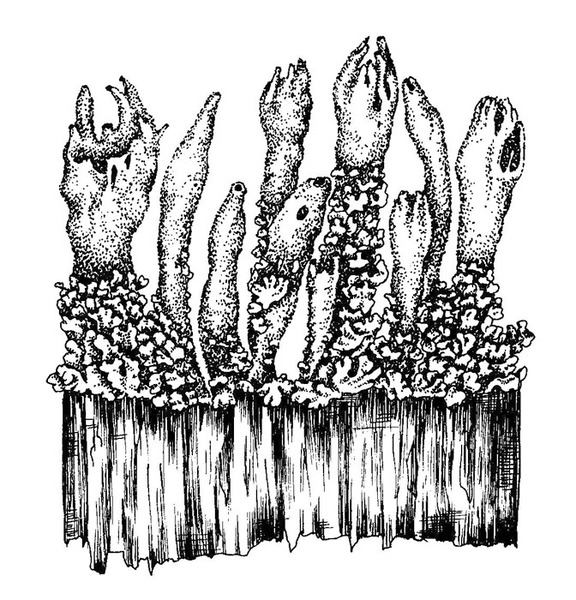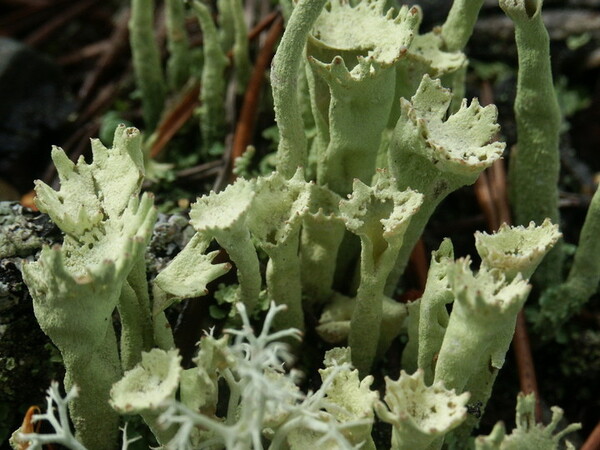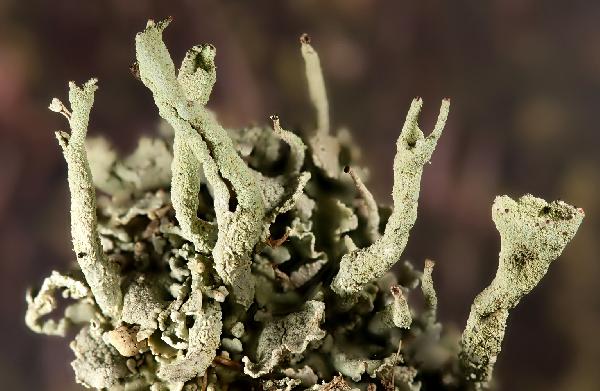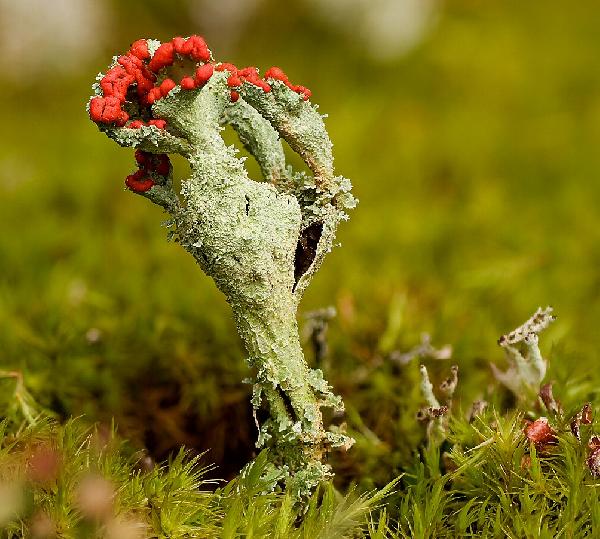Cladonia sulphurina (Michx.) Fr.
Lichenogr. Eur. Ref.: 237, 1831. Basionym: Scyphophorus sulphurinus Michx. - Fl. Bor.-Amer., 2: 238, 1803.
Synonyms: Cladonia deformis var. gonecha (Ach.) Arnold; Cladonia gonecha (Ach.) Asahina
Distribution: N - Frl (Martellos 2005), Ven (Nascimbene & Caniglia 2003c, Nascimbene & al. 2006e, Nascimbene 2008c, 2011), TAA (Caniglia & al. 2002, Nascimbene 2005b, 2006b, 2006c, 2008b, 2013, Nascimbene & al. 2005, 2006, 2006e, 2007b, 2008c, 2022, Nimis & al. 2015), Lomb (Rivellini 1994, Rivellini & Valcuvia 1996, Nascimbene 2006, Nascimbene & al. 2006e, Gheza 2019b, Gheza & al. 2022), Piem (Morisi & Sereno 1995, Isocrono & al. 2003b, 2006, 2006b), VA (Valcuvia 2000, Matteucci & al. 2008, Isocrono & al. 2008).
Description: Primary thallus squamulose, persistent, the squamules rather large, flat or ascending, more or less round, slightly crenulate, 2-4(-8) mm long and 2.5-4(-6) mm wide, bright yellowish green above, white to yellow-brown beneath, sometimes sorediate along the margins. Podetia elongate, hollow inside, bright yellowish green, 2-5(-8) cm tall, mostly cupless and with pointed ends, sometimes with narrow, lacerated, very irregular, sorediate cups, much deformed and longitudinally split, corticate and often squamulose only at base, farinose-sorediate in upper part, the soredia 20-40 μm in diam. Apothecia rather rare, scarlet red. Asci 8-spored, clavate, thickened at apex, with a K/I+ blue tholus and a K/I+ strongly blue outer gelatinous sheath, Cladonia-type. Ascospores 1-celled, hyaline, ellipsoid. Pycnidia scarlet red, subglobose, semi-immersed along the margins of cups, with a red jelly. Conidia hyaline, curved. Photobiont chlorococcoid. Spot tests: K-, C-, KC+ yellowish, P-, UV+ white. Chemistry: usnic and sometimes squamatic acids, plus fatty acids; rhodocladonic acid in apothecia and pycnidia.Note: a circumboreal-subarctic lichen found on organic substrata in cold-shaded situations, most common on rotting wood, e.g. on stumps and decaying fallen trunks. See also note on C. deformis.
Growth form: Fruticose
Substrata: lignum, soil, terricolous mosses, and plant debris
Photobiont: green algae other than Trentepohlia
Reproductive strategy: mainly asexual, by soredia, or soredia-like structures (e.g. blastidia)
Commonnes-rarity: (info)
Alpine belt: absent
Subalpine belt: rather common
Oromediterranean belt: absent
Montane belt: rare
Submediterranean belt: absent
Padanian area: absent
Humid submediterranean belt: absent
Humid mediterranean belt: absent
Dry mediterranean belt: absent

Predictive model
Herbarium samples
Growth form: Fruticose
Substrata: lignum, soil, terricolous mosses, and plant debris
Photobiont: green algae other than Trentepohlia
Reproductive strategy: mainly asexual, by soredia, or soredia-like structures (e.g. blastidia)
Commonnes-rarity: (info)
Alpine belt: absent
Subalpine belt: rather common
Oromediterranean belt: absent
Montane belt: rare
Submediterranean belt: absent
Padanian area: absent
Humid submediterranean belt: absent
Humid mediterranean belt: absent
Dry mediterranean belt: absent

Predictive model
| Herbarium samples |
 Index Fungorum
Index Fungorum
 GBIF
GBIF
